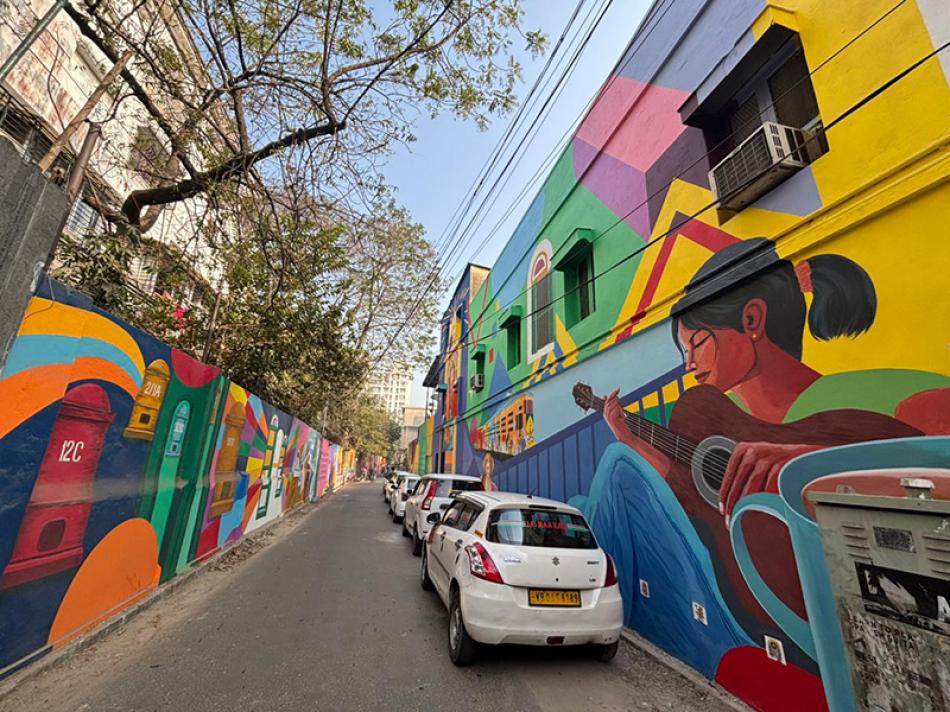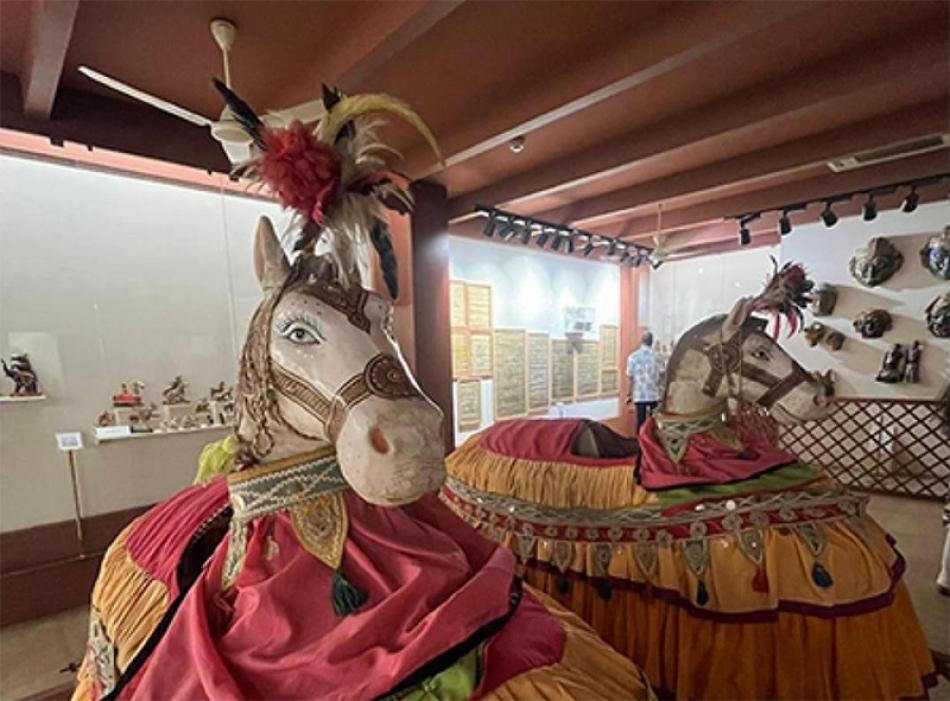NITN | @notintownlive | 19 Jan 2024, 05:50 am
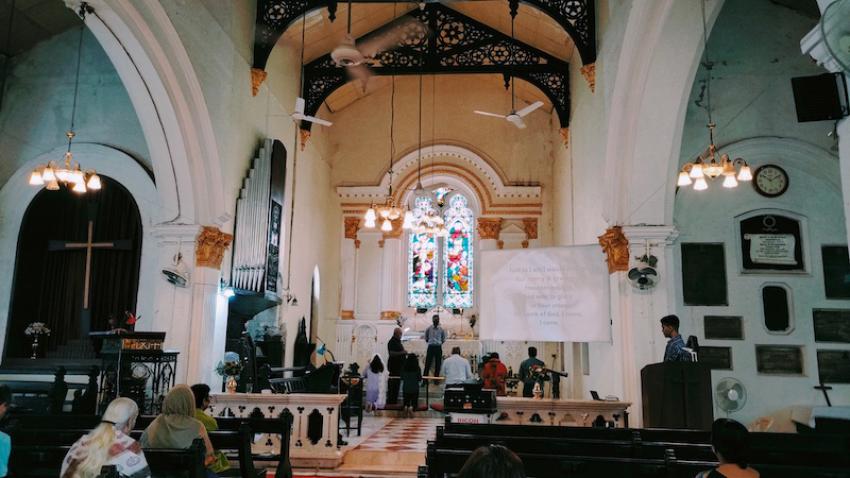 Heritage
Heritage
A Sunday morning Church Service attended mostly by servicemen and their families. Photo courtesy: Jonathanvarunbenjamin /Wikipedia Creative Commons
Christ Church of Mhow (now Dr Ambedkar Nagar) in Madhya Pradesh is a reflection of the town’s 19th century architectural gems, writes Major General Binoy Poonnen, AVSM, VSM.
As the church choir sang ‘Heavens came down and glory filled my soul’, they were joined by the congregation, which also included the Commandant of the Army War College of Mhow and other senior serving officers as well as military veterans.
Because the prayer service on that pleasant Sunday morning in December last year was very special.
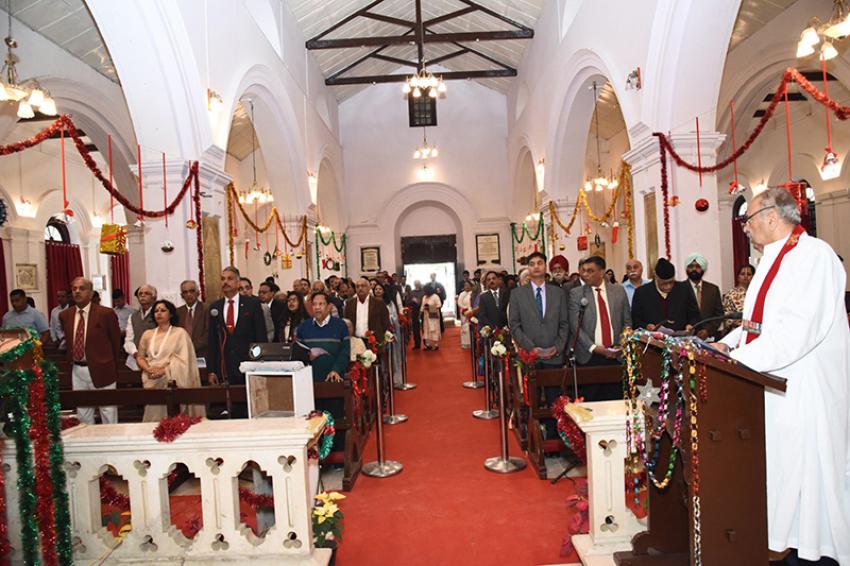
People of all faiths had gathered to celebrate the 200th anniversary of the town’s popular attraction, the Christ Church (Church); some of the attendees were closely associated with the restoration of the landmark.
About 25km away from Indore, a popular business city of Madhya Pradesh, Mhow nestles amid the Malwa Plateau, between the basins of Chambal and Narmada rivers.
There are several views about the name Mhow.
While many claim that it is an acronym for Military Headquarters for War, others claim that the place was called Mhow Gaon much before the British arrived.
Mhow has now been renamed as Dr Ambedkar Nagar as a mark of respect to the architect of the Indian Constitution, Dr B R Ambedkar, who was born here.
With a large number of veterans from the Indian armed forces having settled down in Mhow, it is often called a ‘Pensioners’ Paradise’.
The cantonment
The little known village shot to fame in 1818 when Maj Gen John Malcolm established a cantonment here after defeating the Holkar ruler in the Battle of Mahidpur (1817) and the signing of the Treaty of Mandsaur.
Mhow was the headquarters of the 5th (Mhow) Division of the Southern Army under the British.
The British chose Mhow as a cantonment for several reasons.
The salubrious climate, its strategic location in central India, the availability of large areas of land for training, and an area which was not likely to get affected by floods, were some of the key reasons behind the choice.
After independence, the Indian Army established three important training institutions in Mhow – The Infantry School, The Army War College, and the Military College of Telecommunications Engineering (an area earlier occupied by the British Infantry Barracks).
Christ Church
The Church was built between 1818 and 1823 by the troops of the Warwickshire and Brecknockshire regiments, the first British army units to be based in Mhow.
According to records, to differentiate it from Mhow’s ‘Church of Scotland’ and the ‘Church of Ireland’, it was called the ‘Church of England’ and rechristened as the Christ Church in 1947.
Reverend WB Parmer, the Veterinary Doctor of the Cantonment Board, Mhow, was appointed as the minister in 1947.
Architectural highlights
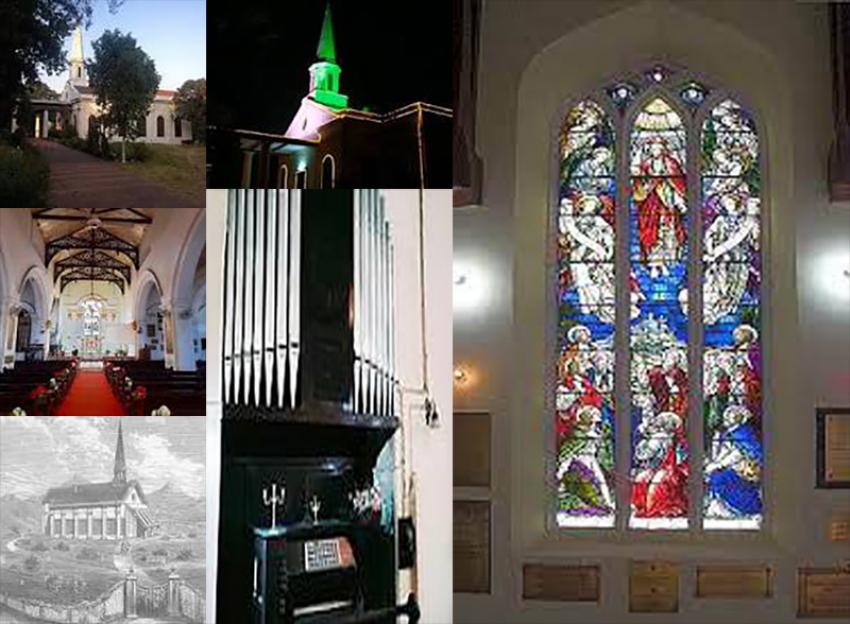
The Church building appears to follow a modified version of early English Gothic style of architecture.
The single transept is at the front of the building while the steeple stands approximately 10 metres high to the aft, topped by a spire and belfry, which houses the bell.
Initially, the roof was made of canvas, which was later replaced by a wooden structure and tiles.
The Church was said to be the tallest building of Mhow at the time of construction.
A framework of teak supports the central portion of the Church while the walls are made of brick and lime mortar.
The marble altar was added in 1881.
There are two large stained glass windows above the altar at the east end; one depicts Jesus on the Cross and the other shows Jesus with his apostles.
In 1877, two wings (with steel girders supporting the roof) were added to the building to accommodate the expanding congregation.
Interestingly, after the Sepoy Mutiny of 1857, rifle holders were added to the pews of the Church because the British soldiers were required to carry their weapons at all times.
The British soldiers of both battalions would march in through the northern and southern gates led by their bands, remove their headgear, place their weapons in the holders, and join the prayer service.
Commemorative and memorial plaques
The walls of the church are adorned with commemorative and memorial plaques, which stand as a testimony to the people who lived and worked in Mhow.
The tablets commemorate units and their tenures in Mhow, individuals of units who died while serving in Mhow and individuals or families who died due to malaria and other diseases while stationed in Mhow.
Even today the Church is held in high esteem by British, Scots, Irish and Australians as well as members of the Indian Army who visit this church for various sentimental reasons.
The pipe organ
One of the key features of the Church is the pipe organ.
It was installed by the Second Battalion of the Suffolk Regiment in 1936, following the construction of an additional room for the bellows, the wind-chest and other equipment.
The organ has 14 pipes; unfortunately, it is not in working condition any more.
A period of decay
Between 1947 and 1971, the Church was supervised by the Bishop of Nagpur while the repairs and upkeep of the building was done by the Military Engineer Services (MES).
During the Indo-Pak War of 1971, the military personnel were moved out of Mhow.
However, after their return after the war, MES did not take up the responsibility of maintaining the Church.
Until 1992, the Church not only suffered considerable decay but also lost many of its artefacts and furniture.
Restoration
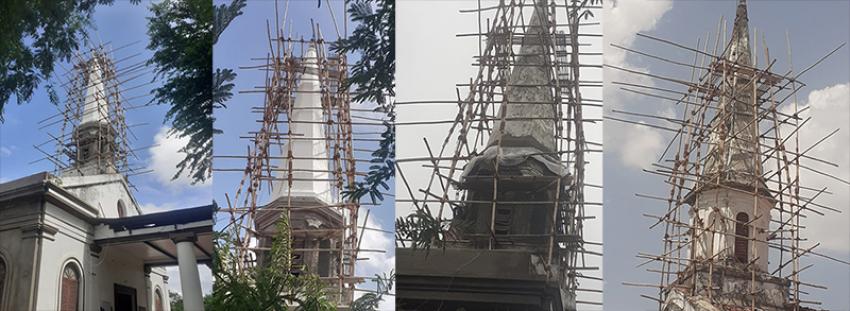
In 1992, Major Samuel Paul, an old resident of Mhow, returned to town upon retirement from the Indian Army and took up the responsibility of taking care of the Church on an honorary basis.
Paul continues to be the pastor of the Church till date.
Presently, the Church has a multi-denominational attendance, with a significant transient membership of service personnel and their families who visit Mhow for military duties.
In 2004, members pooled in contributions for repairing and restoring the building.
Following large-scale renovation works since February 2023, especially of the roof and the side walls, it has been possible to bring back the old architectural glory of the Church.
A granite memorial plaque commemorating the bicentenary now adorns the outer wall at the entrance of the church.
Presently, the Church has a multi-denominational attendance, with a significant transient membership of service personnel and their families who visit Mhow for military duties.
About the author: Pune born Major General Binoy Poonnen was commissioned into the Infantry (13 Mahar Regiment) in 1978. As a Colonel, he commanded 13 Mahar in an operational area and the unit was conferred with the Chief of Army Staff Unit Citation. As a Brigadier, he commanded a Mountain Brigade in an operational area. As a Major General, he commanded a Mountain Division which was deployed in a counter insurgency role. He was awarded the Ati Vishisht Seva Medal and the Vishisht Seva Medal by the President of India.
(Editing by Uttara Gangopadhyay)
- This City is Quietly Redefining What a Holiday Experience Looks Like
- Saigon Sisters in Chicago — A Dumplings & Bao Love Story
- Beyond Old and New: Bickram Ghosh and the Art of Fusion at Serendipity
- From Kennedy’s Proposal to 1850s Saloons: The Three Historic D.C. Restaurants Everyone Must Try
- This city has the best bagel in the US, and it’s not New York!
- I escaped to Pachmarhi — what I found in the queen of Satpura left me spellbound
- Air Canada just ranked the Best New Restaurants of 2025 - And the Top Spot isn't who you think
- Rediscovering Arunachal's Monpa Cuisine: One Woman’s Millet Momo Revolution
- Discovering Heritage: A visual journey through Odisha crafts museum Kalabhoomi
- From kebabs to biriyani: Lucknow gets UNESCO honour for its royal cuisine
Lufthansa will mark its 100th anniversary in 2026, commemorating a century since the founding of the original “Luft Hansa” on January 6, 1926. The airline’s first flight followed shortly after, on April 6 of the same year, marking the beginning of what would become one of aviation’s most recognisable brands.
Tata Group-owned Air India on Tuesday announced a new, unilateral codeshare partnership with airBaltic, the flag carrier of Latvia, thus making the Baltic region more conveniently accessible for Air India customers.
Air India Express, India’s first international value carrier, has rolled out its monthly, ‘PayDay Sale’, offering special fares across its domestic and international network.

